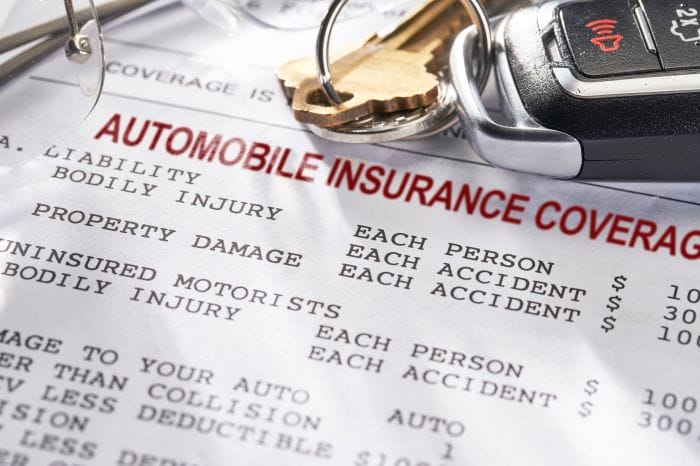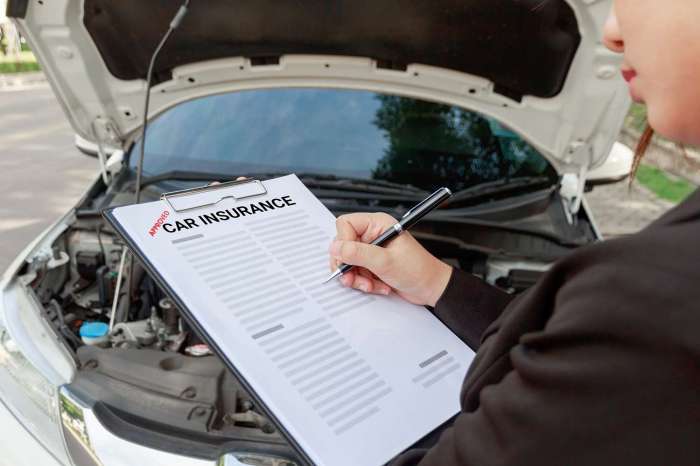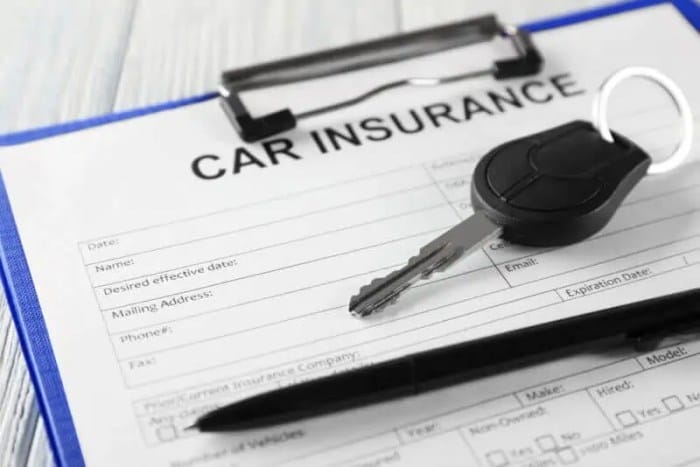In today’s economic climate, finding ways to save money is more important than ever. Car insurance is a significant expense for many drivers, but there are steps you can take to reduce your premiums without sacrificing coverage.
This guide will provide you with practical tips and ideas to help you cut your car insurance costs. From comparing quotes to bundling policies, we’ll cover a range of strategies to save you money while ensuring you have the protection you need.
Comparison of Insurance Providers

Engaging in a comparison of various insurance providers is a prudent financial decision that can yield significant savings on car insurance premiums. To navigate the intricate landscape of insurance options effectively, individuals should undertake a comprehensive analysis of multiple providers’ offerings, taking into account coverage details, deductibles, and customer service ratings.
Shopping Around for the Best Deals
When embarking on the quest for the most competitive car insurance rates, it is imperative to solicit quotes from a diverse range of insurance companies, both established and emerging. This extensive comparison process allows individuals to gain a panoramic view of the available options, ensuring that they secure the most favorable terms and conditions aligned with their unique needs and circumstances.
Coverage and Deductibles: Balancing Protection and Cost
Navigating the intricacies of car insurance coverage options requires a meticulous assessment of the specific risks and exposures associated with each individual’s driving profile and vehicle usage. Comprehensive coverage provides peace of mind by safeguarding against a wide spectrum of potential perils, while collision and liability coverage are fundamental components of a robust insurance policy.
The deductible, representing the out-of-pocket expense incurred by the policyholder before the insurance coverage takes effect, plays a pivotal role in determining the overall premium. By opting for a higher deductible, individuals can potentially lower their premiums, albeit at the expense of assuming a greater financial burden in the event of a claim.
Customer Service: Ensuring a Seamless Experience
Beyond the financial implications, individuals should also consider the quality of customer service provided by insurance companies when making their selection. Prompt claim processing, courteous and knowledgeable representatives, and a user-friendly online platform contribute to an overall positive policyholder experience.
Regular Review: Staying Ahead of the Curve
The insurance landscape is subject to constant evolution, with new providers entering the market and existing ones adjusting their offerings. To ensure that they consistently benefit from the most advantageous rates and coverage terms, individuals are advised to periodically review their insurance policies and compare them with the latest offerings from various providers.
This proactive approach can result in substantial savings over the long term.
Deductible Adjustments

Your insurance deductible is the amount you pay out of pocket before your insurance company starts covering the costs of a claim. Increasing your deductible can significantly lower your insurance premiums, but it also means you’ll have to pay more out of pocket if you file a claim.
The optimal deductible level depends on your personal circumstances, including your financial situation, risk tolerance, and driving history. If you have a good driving record and can afford to pay a higher deductible, you may be able to save money on your insurance premiums.
However, if you have a history of accidents or claims, or if you are on a tight budget, you may want to choose a lower deductible.
Factors to Consider When Choosing a Deductible
- Your financial situation: If you have a limited budget, a higher deductible may be more affordable. However, if you have the financial means, a lower deductible may provide you with more peace of mind.
- Your risk tolerance: If you are comfortable with taking on more risk, a higher deductible may be a good option for you. However, if you are more risk-averse, you may want to choose a lower deductible.
- Your driving history: If you have a good driving record, you are less likely to file a claim, so you may be able to afford a higher deductible. However, if you have a history of accidents or claims, you may want to choose a lower deductible.
- Your car’s value: If you have an expensive car, you may want to choose a lower deductible to protect your investment. However, if you have an older or less valuable car, you may be able to afford a higher deductible.
Trade-offs Between Higher Deductibles and Lower Premiums
There are both advantages and disadvantages to choosing a higher deductible. On the one hand, a higher deductible can save you money on your insurance premiums. On the other hand, a higher deductible means you will have to pay more out of pocket if you file a claim.
The following table summarizes the trade-offs between higher deductibles and lower premiums:
| Higher Deductible | Lower Deductible |
|---|---|
| Lower insurance premiums | Higher insurance premiums |
| More out-of-pocket costs if you file a claim | Less out-of-pocket costs if you file a claim |
| May be more affordable for drivers with good driving records and financial means | May be more affordable for drivers with poor driving records or limited budgets |
Bundling Policies

Bundling auto insurance with other policies can lead to significant savings. Insurance companies often offer discounts when you purchase multiple policies from them, incentivizing customers to consolidate their coverage under one provider.
For instance, if you have auto insurance with Company A and home insurance with Company B, you may be able to save money by bundling both policies with Company A. This is because insurance companies view bundled policies as a lower risk, as they assume that customers who bundle their policies are less likely to switch providers.
Benefits of Bundling Policies
- Cost Savings: Bundling policies can lead to significant cost savings, as insurance companies often offer discounts for customers who purchase multiple policies from them.
- Convenience: Bundling policies with one provider simplifies the management of your insurance needs. You only have to deal with one company for all of your policies, making it easier to track your coverage and make changes as needed.
- Streamlined Claims Process: In the event of a claim, bundling policies with one provider can make the claims process more streamlined. You only have to deal with one company, which can expedite the resolution of your claim.
Comparison of Individual Policies vs. Bundled Policies
The following table compares the costs of individual policies versus bundled policies:
| Policy | Individual Cost | Bundled Cost | Savings |
|---|---|---|---|
| Auto Insurance | $1,000 | $800 | $200 |
| Home Insurance | $500 | $400 | $100 |
| Total | $1,500 | $1,200 | $300 |
Usage-Based Insurance Programs
Usage-based insurance (UBI) programs offer drivers the opportunity to save money on their car insurance premiums by monitoring their driving habits. These programs utilize technology to track various aspects of a driver’s behavior, such as mileage, acceleration, braking, and speed, to determine their risk level.
How UBI Programs Work
UBI programs typically involve installing a device in the driver’s vehicle that collects data on their driving habits. This data is then transmitted to the insurance company, which uses it to calculate the driver’s insurance premium. Drivers who exhibit safer driving habits, such as driving fewer miles, accelerating and braking smoothly, and maintaining a safe speed, are rewarded with lower premiums.
Real-Life Examples of UBI Program Savings
Numerous real-life examples demonstrate the cost-saving benefits of UBI programs. For instance, a study conducted by the Insurance Institute for Highway Safety (IIHS) found that UBI participants saved an average of 15% on their car insurance premiums. Additionally, a study by the University of California, Berkeley, revealed that UBI participants who improved their driving habits saved up to 30% on their premiums.
Privacy Concerns and Addressing Them
UBI programs have raised privacy concerns due to the collection and monitoring of personal driving data. To address these concerns, insurance companies have implemented various measures to protect driver privacy. These measures include anonymizing data, limiting data collection to specific purposes, and obtaining explicit consent from drivers before collecting their data.
Discounts and Perks
Insurance companies offer a variety of discounts and perks to attract and retain customers. These incentives can help policyholders save money on their car insurance premiums.
Common discounts include:
- Good driver discounts: Rewarding policyholders with a clean driving record and no recent accidents or violations.
- Multi-car discounts: Offering reduced rates for insuring multiple vehicles under the same policy.
- Loyalty discounts: Providing discounts to policyholders who renew their policies with the same company for a certain period.
- Occupational discounts: Offering lower rates to policyholders in certain professions, such as teachers, nurses, and government employees.
- Student discounts: Providing reduced rates for students with good grades and maintaining a certain GPA.
- Senior discounts: Offering lower rates to drivers aged 55 or older.
- Usage-based insurance discounts: Rewarding policyholders for driving safely and less frequently through telematics devices.
Telematics devices are small devices installed in vehicles that track driving behavior, such as speed, braking, and mileage. By monitoring driving habits, insurance companies can assess risk more accurately and offer personalized discounts to safe drivers.
Some insurance companies also offer unique discounts or rewards programs. For example, some companies offer discounts for insuring electric or hybrid vehicles, while others provide cashback or gift cards for policyholders who refer new customers.
Safe Driving Habits

Adopting safe driving habits can significantly reduce the likelihood of accidents, leading to lower insurance premiums and improved overall road safety. This section explores the importance of safe driving practices and their impact on insurance rates.
Obey Speed Limits
Speeding is a major contributing factor to accidents and traffic violations. By adhering to speed limits, drivers minimize the risk of accidents, traffic citations, and associated insurance rate increases.
Avoid Distractions
Distracted driving, including using mobile phones, eating, or engaging in other activities while driving, significantly increases the risk of accidents. Eliminating distractions allows drivers to focus on the road, reducing the likelihood of incidents and lowering insurance costs.
Maintain a Clean Driving Record
A clean driving record, free from accidents and traffic violations, is a key factor in determining insurance rates. Maintaining a clean record demonstrates responsible driving behavior and reduces the likelihood of claims, leading to lower premiums.
Defensive Driving Courses
Taking defensive driving courses can enhance driving skills, teach accident avoidance techniques, and improve overall road safety awareness. Completing these courses may lead to insurance discounts and lower premiums.
Claims History and Credit Score

Your claims history and credit score are two important factors that insurance companies consider when setting your car insurance rate. A good credit score and a clean claims history can lead to lower premiums, while a bad credit score and a history of accidents can lead to higher premiums.
Claims History
Your claims history is a record of all the insurance claims you have filed. This includes claims for accidents, vandalism, theft, and other damages. The more claims you have, the higher your insurance rate will be.
There are a few things you can do to improve your claims history. First, try to avoid getting into accidents. This means driving carefully and obeying the speed limit. Second, if you do get into an accident, try to resolve it without filing a claim.
This is especially important for minor accidents. Third, if you do have to file a claim, make sure to pay your deductible on time and in full.
Credit Score
Your credit score is a measure of your creditworthiness. It is based on your payment history, the amount of debt you have, and the length of your credit history. A good credit score shows insurance companies that you are a responsible driver and that you are less likely to file a claim.
There are a few things you can do to improve your credit score. First, make sure to pay your bills on time. This includes your credit card bills, your car loan payments, and your insurance premiums. Second, try to keep your debt-to-income ratio low.
This means that your total debt payments should not exceed a certain percentage of your income. Third, try to avoid opening too many new credit accounts in a short amount of time.
The Impact of Claims History and Credit Score on Car Insurance Rates
The impact of claims history and credit score on car insurance rates can be significant. For example, a driver with a bad credit score and a history of accidents could pay up to 50% more for car insurance than a driver with a good credit score and a clean claims history.
It is important to keep in mind that insurance companies are not allowed to use your credit score to deny you coverage. However, they can use your credit score to set your insurance rate.
How to Maintain a Good Credit Score and Avoid Accidents
There are a few things you can do to maintain a good credit score and avoid accidents.
- Pay your bills on time.
- Keep your debt-to-income ratio low.
- Avoid opening too many new credit accounts in a short amount of time.
- Drive carefully and obey the speed limit.
- Resolve accidents without filing a claim.
- Pay your deductible on time and in full.
By following these tips, you can help to keep your insurance premiums low and protect your financial future.
Annual Mileage

The distance you drive each year, known as annual mileage, is a key factor that insurance companies consider when calculating your car insurance rates. Generally, drivers who put more miles on their cars are considered to be at higher risk of accidents and thus pay higher premiums.
The table below illustrates how annual mileage ranges correspond to different insurance rates:
| Annual Mileage Range | Insurance Rate |
|---|---|
| 0-6,000 miles | Lowest |
| 6,001-10,000 miles | Low |
| 10,001-15,000 miles | Moderate |
| 15,001-20,000 miles | High |
| 20,001+ miles | Highest |
Strategies for Reducing Annual Mileage
If you want to lower your car insurance rates, consider reducing your annual mileage. Here are a few strategies to help you do that:
- Carpool or Use Public Transportation: Share rides with friends, family, or colleagues, or use public transportation whenever possible.
- Walk or Bike More: For short distances, consider walking or biking instead of driving.
- Plan Your Trips: Before you head out, plan your route and combine errands to minimize driving time.
- Choose a Car with Good Gas Mileage: If you’re buying a new car, consider one with good gas mileage to reduce the number of trips to the gas station.
Vehicle Type and Age

The type and age of a vehicle are key factors that insurance companies consider when determining rates. Different vehicles have different levels of risk associated with them, and older vehicles are generally more expensive to insure than newer ones.
Vehicles that are more expensive to insure typically include sports cars, luxury cars, and high-performance vehicles. These vehicles are often more likely to be involved in accidents and are more costly to repair.
Factors Considered by Insurance Companies
- Vehicle safety features: Vehicles with advanced safety features, such as airbags, anti-lock brakes, and electronic stability control, are typically less expensive to insure.
- Vehicle theft rates: Vehicles that are more likely to be stolen are more expensive to insure. This is because insurance companies have to pay out more claims for stolen vehicles.
- Vehicle repair costs: Vehicles that are more expensive to repair are also more expensive to insure. This is because insurance companies have to pay more to fix these vehicles when they are damaged.
- Vehicle age: Older vehicles are generally more expensive to insure than newer ones. This is because older vehicles are more likely to have mechanical problems and are more likely to be involved in accidents.
Additional Coverage Options

Additional coverage options provide comprehensive protection for drivers beyond the basic coverage of liability and collision insurance. These options cover a wider range of situations, such as theft, vandalism, and accidents involving uninsured or underinsured motorists.
Understanding the benefits and drawbacks of each additional coverage option can help drivers make informed decisions about their insurance needs.
Comprehensive Coverage
Comprehensive coverage provides protection against non-collision-related damages to a vehicle. It covers events such as theft, vandalism, fire, natural disasters, and falling objects.
Benefits:
- Provides peace of mind knowing that a vehicle is protected against a wide range of potential hazards.
- Can help cover the cost of repairs or replacement of a vehicle in the event of a covered loss.
Drawbacks:
- May increase insurance premiums.
- May not cover all types of losses, such as mechanical breakdowns or wear and tear.
Collision Coverage
Collision coverage provides protection for damages to a vehicle caused by a collision with another vehicle or object. It covers both at-fault and not-at-fault accidents.
Benefits:
- Provides financial protection in the event of a collision.
- Can help cover the cost of repairs or replacement of a vehicle.
Drawbacks:
- May increase insurance premiums.
- May not cover all types of damages, such as those caused by wear and tear or mechanical breakdowns.
Uninsured/Underinsured Motorist Coverage
Uninsured/underinsured motorist coverage provides protection for drivers in the event of an accident caused by a driver who does not have insurance or has insufficient insurance to cover the damages.
Benefits:
- Provides financial protection in the event of an accident with an uninsured or underinsured driver.
- Can help cover medical expenses, property damage, and lost wages.
Drawbacks:
- May increase insurance premiums.
- May not cover all types of damages, such as punitive damages or pain and suffering.
Choosing the right additional coverage options depends on a driver’s individual circumstances and risk tolerance. Factors to consider include the value of the vehicle, the likelihood of certain types of losses, and the driver’s financial situation.
Conclusion
By following these tips and ideas, you can significantly reduce your car insurance costs without compromising your coverage. Remember, the key is to shop around, compare quotes, and take advantage of discounts and programs that can help you save money.
With a little effort, you can find an insurance policy that meets your needs and budget.
Frequently Asked Questions
Q: What is the best way to find the most competitive car insurance rates?
A: The best way to find the most competitive car insurance rates is to compare quotes from multiple insurance companies. You can do this online or through an insurance agent.
Q: How can I lower my car insurance premiums by adjusting my deductible?
A: Increasing your deductible can lower your insurance premiums. However, it’s important to choose a deductible that you can afford to pay in the event of an accident.
Q: What are the benefits of bundling my car insurance with other policies?
A: Bundling your car insurance with other policies, such as home or renters insurance, can save you money. Many insurance companies offer discounts for bundling policies.
Q: How do usage-based insurance programs work?
A: Usage-based insurance programs track your driving behavior and reward you with lower premiums for safe driving. These programs typically use a device that plugs into your car’s diagnostic port to collect data about your driving habits.
Q: What are some common discounts and perks offered by car insurance companies?
A: Common discounts and perks offered by car insurance companies include good driver discounts, multi-car discounts, and loyalty discounts. Some companies also offer discounts for telematics devices that track your driving behavior.



